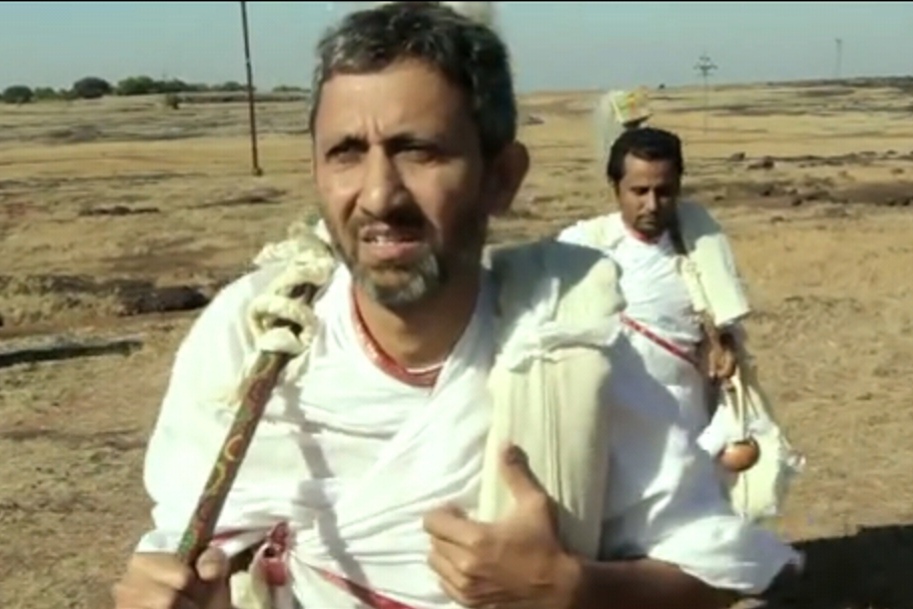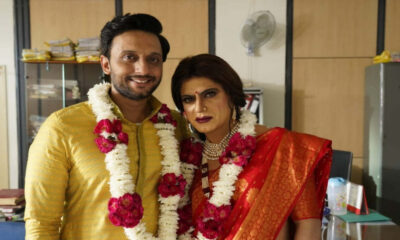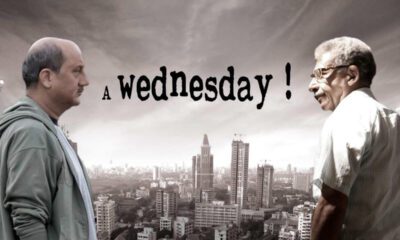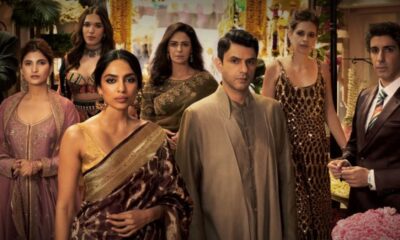Exclusive Premium Content
3 unforgettable Bollywood Performances From The Last Decade

Three Performances From The Last Decade That I Can’t Forget
Neeraj Kabi in Ship Of Theseus: This is a somber, meditative profound and yet weightless work of unfettered beauty with a life-changing performance by Neeraj Kabi who plays a monk who won’t use pharmaceutical medicines even if it kills him. Director Anand Gandhi defines life’s mysteries in mysterious ways,showing a command over his mammoth philosophical world that Mani Kaul and Jean-Luc Godard would have envied. In my favourite story the ailing monk,played with inscrutable veracity by Neeraj Kabi, speaks to his young beatnik lawyer-friend as they walk briskly across the bustling streets of Mumbai ,the camera trails their dialogue without cuts.No one would dare interrupt a discourse on the exigencies and practicalities of a non-violent protest against medical experiments on animals when two such iconoclasts are at it with an extempore exuberance.The importance of this film lies in its complete eschewal of self-importance. Anand Gandhi takes on questions that echo across eternities. Rather than assume a position of infinite disposition the film’s tone is one of contained exposition . Sometimes ailing and healing become a unified process. Just as suffering is a precursor to wisdom, so too a film about the curative process can , and in this case, does, provide some profound insight into the workings of the human heart.There are three stories of infinite reverberations in debutant director Anand Gandhi’s film. And what a debut Gandhi has made! Ship Of Theseus is so luminously layered , so spectacularly segmented, and yet so cohesively assembled you fear the entire burden of existence would weigh down the narrative. But no. The Gandhian miracle is that there is a sense of lightness running through the three stories.We can comfortably say,this is the neo-Gandhi’s experiments with truth.Anand Gandhi doesn’t fear the unknown. He explores the darkest areas of the human soul and waits patiently for answers to emerge in the questioning light .
Often we see, the three protagonists walk that talk to an area of enlightenment through inter sectional interactions that don’t subscribe to basic rules of engaging cinema.The film’s three editors Adesh Prasad, Sanyukta Kaza and Satchik Puranik(I presume each edited one of the 3 stories) doesn’t prune down the shots to get our attention. Instead we are invited into this world of spatial scrupulosity where cinematic rules of time-management are undermined for the sake of something much larger and vital. The importance of this film lies in its complete eschewal of self-importance. Anand Gandhi takes on questions that echo across eternities. Rather than assume a position of infinite disposition the film’s tone is one of contained exposition .As a writer and director Gandhi doesn’t get carried away even when his characters do. Not that they are susceptible to extravagant self-expression. The one trait that connects all three protagonists is their aversion to overt emotional display. In the first story the very beautiful Aida El Kashef plays Alia who in blindness discovers an inner incandescent vision that enables her to become an outstanding photographer.Alia tends to get argumentative with her patient boy-friend in her state of non-visibility.Even when Alia loses her cool she loses it coolly.
Very coolly. The disposition to allow the characters an emotional and spiritual freedom is pre-empted by a stark austere state of expression which doesn’t encourage self-indulgent narrative devices.The images that run through the film are qualified by a minimalist beauty. Even the streets, sights and sounds of Mumbai are not used to convey the overpowering desolation of the dispassionate bustle that we saw in, say Kiran Rao’s Dhobi Ghat.Monks walking bare-feet through acres of windmills, or the solitary monk barely able to walk through his illness plodding through Mumbai’s compromised hinterland…For some reason the best visual images occur on the monk’s tale.Cinematographer Pankaj Kumar(what a maestro of the lenses!) is given the daunting task of visually manifesting a series of abstract intangible images of suffering and redemption that run through the director’s head. The camera never lies.This film wouldn’t allow it to, even if it tried. The exceptional beauty of this work is not blinding in its brilliance. The visuals constantly assume positions that manifest the lost inner world of the characters while making sure not to lose sight of the ambiance that fosters their individual space.As the characters seek to find a centre to their fractured conscience we are privy to an extraordinary process of filmmaking where the director builds a connecting bridge between the world of ideas and their outward manifestation. The most straightforward and the least lyrical of the three stories is the third story where Sohum Shah(born to play his character) is a stockbroker who sets off on trail to Stockholm to retrieve the stolen kidney of a poor chawl dweller.Retrieval and redemption run across the length of this unconditionally nourishing cinema. Gandhi’s narration is so devoid of cinematic affectations and so emphatically rooted to a reality that shuns coyness, that we straightaway become a part of the world that the director has built brick by brick into this edifice of uncluttured beauty.Indeed the more profound the ideas get in Gandhi’s narration the less complicated is the storytelling.Finally when the three stories come together through the theme of organ transplant we are no longer looking at and for binding threads.Ship Of Theseus takes us so far away from the acceptable prerequisites and definition of Good Cinema that we forget that so far, we have never forgiven cinema that dares to be self-indulgent.Ship Of Theseus is a cinema of self-indulgence at its sublimest. Gandhi weaves his ideas into coiled urgent vignettes that tell us so much about the quality of life without engaging us in uneccessary polemics. This is a film of ideas. Luckily the plot doesn’t get mired in theoretic masturbation.What we come away with is a sense of loss even as the film weaves a hypnotic tale of repair redemption and renewal.
Kartik Aaryan In Akash Vani: In one of the film’s high dramatic moments shot on a small deserted railway station in the night, the film’s protagonists, now estranged by an unfortunate series of circumstances, sit on the bench and…well, they sob. Yes, they simply cry their hearts out. First, the girl. Then in a melancholic celebration of the me-too syndrome, the boy, now alas no longer a boy(and he smokes to prove it) also breaks into little sobs that build up into a wail as the shehnai, indicative of a cruel marital joke, plays in the background..The sequence in the hands of a lesser director would have fallen flat on its sobbing face.
Luv Ranjan has the punch-filled boys-will-be-boys saga Pyaar Ka Punchnaama behind him to prove his solid grip over the grammar of the hearts of the young and the confused.This is Kartik Aryan most honest performance to date. Luv Ranjan’s screenplay takes the lovers from the corny escapades and frigid philosophizing of the college campus to the precipice of heartbreak.The journey given a vivid visual manifestation by Sudhir K Chaudhuri’s fluid camerawork, is made with ample feeling and remarkable restrain.Unlike other contemporary celluloid raconteurs Ranjan is not fearful of silences. He doesn’t fill up every conceivable nook and corner of the storytelling with words and music, though I must state here that Hitesh Sonik’s background music and the songs in the later part of the film go a long way in building an appealing case for the lead pair’s star-crossed relationship.If Akaash and Vani seem so lost without each other it’s a lot to do with the way their emotions are pinned down by the words and the music that underline the course of their togetherness.On many occasions Ranjan allows the lead pair to share silences. A rarity in today’s cinema where it is presumed that the average moviegoer has the attention-span of a sparrow looking for twigs before the rain starts pelting down. There are long meditative stretches of just simple non-verbal communication between the protagonists. It’s a risk to allow audiences to get restive. But a risk worth taking.Ranjan’s lovers come across as people who do what they do not to impress others but simply because their heart tells them to behave the way they are shown. Both the lead actors are extremely effective in showing their character’s innerworld. Though the film belongs to the female protagonist , Kartik manages to hold his own with an endearing performance far removed from what he attempted in the director’s Pyaar Ka Punchnaama. Though there are patches of aridity in the relationship(what was Akaash doing while Vani was suffering in malfunctional domesticity?) this is a very good film about a bad marriage, or what havoc a wrong decision about one’s life can create. To his credit director Luv Ranjan is able to hold the lovers’ predicament in place .He has a keen eye for the inner life of his protagonists.Their inner turmoil is palpable and urgent.Seldom since Sanjay Leela Bhansali’s have we wished so intently to see two people in love to be united . Ranjan quietly sucks us into the story of Akaash and Vani. Suffused in contemplative silences and deriving its dramatic energy from the age-old debate on arranged versus love marriages, Akaash Vani is thoughtful and absorbing not prone to tripping over with nervous anxiety and excessive energy to hold our attention.The world of Akaash Vani is far removed from the bantering bawdy backchat of Pyaar Ka Punchnaama. But that is the beauty of the second film. It tells you that the director is not frozen in his initial world.
Pavan Malhotra In Children Of War: In one of the many mind-numbing images in this exceptionally vivid work on the wages of war, the back of a truck is jolted open and out falls a tumble of women one on top of another at a Pakistani prisoner camp for Bangladeshi women run by a despicable tyrant who could be the Nazi mass murder Ralph Fiennes in Steven Spielberg’s Schindler’s List. But no! It’s Pavan Malhotra who is brilliantly evil and slimy as the man who believes that if Pakistani soldiers rape and impregnate enough Bangaldeshi women, the separatists and freedom fighters would stop dreaming of their own home-land. Very often as I watched debutant director Mrityunjay Devvrat’s stunning film I was reminded of the great anti-Nazi films, like Alan Pakula’s Sophie’s Choice, Richard Attenborough’s A Bridge Too Far, and Quentin Tarantino’s Inglorious Basterds. I was also reminded of Nandita Das’s Firaaq about Gujarat’s 2002 genocide where a truckload of corpses had tumbled out. The difference is, the women who fall from the truck like trash from a garbage van in Children Of War are alive.
They might as well be dead. As these Bangladeshi women, played by actresses of various ages from 12 to 40, who seem to live every second of the agony, are raped repeatedly, you wonder how low human beings can fall when given unlimited power. Rape as a tool of oppression has never served a more brutal purpose in any other film except Shekhar Kapoor’s Bandit Queen. And you wonder why the man or woman who sits in the boss’ chair in the corporate organization is no different from the leery neo-Nazi from the Pakistani concentration camp who supervises the mass rape of Bangladesh women.Children Of War shows how and why absolute power corrupts absolutely. Revisiting the Bangladesh’s war of liberation in 1971 it recreates with nerve-wracking vividness, the horrors of those times when suddenly a whole civilization was threatened with extinction. The director spares us none of the agonizing details. Why should he? When humanity suffered first-world countries turned their faces away. It’s time to face the music.The unannounced midnight knock and the graphic rape that follows, the brutal slayings of refugees on the run as they are intercepted and shot pointblank (in slow motion) on a river bridge as they try to escape, the leery Nazi-like army man peeing into war prisoner’s face…War never seemed more like a personal and political violation.This is not a film for the squeamish. But then, war was never meant for the civilized.
The sheer incivility of a strife where one bully-section of a country decides to teach another section of the people a lesson, is captured in layer after layer of unstrapped brilliance portraying the complete collapse of compassion.The film is littered with passages of unbearable pain and, yes agonizing beauty. It is an indelible irony of all visual arts that human hurt makes for great visuals. The lush lyricism that Mrityunjay Devvrrat supplants to the suffering, never takes from the powerful statement on pain and suffering. Cinematographer Fasahat Khan shoots the chilling nights with prowling predators and ravaged women captured together to emblematize the essential conflict between sexual aggression and vulnerable victims.There is no manipulation here in the merger of the murky and the magnificent. They have co-existed from time-immemorial. In this film, the ugly and the cherishable are so close together that you can touch both and come out as a changed film-viewer. The plot moves across several epic conflicts simultaneously.
There is a teenager Rafiq (played with heartrending vulnerability by Riddhi Sen) who loses his entire family and his home and is left with only a sister (Rucha Inamdar) to flee from the brutality of his homeland to the relative safety of India. Rafiq’s journey becomes a metaphor of Bangladesh’s feral fight to freedom.While the director has made extensive and telling use of documentary footage (including Mrs. Indira Gandhi’s rationale for Indian intervention in Bangladesh), there are many passages of unbounded symbolism leaping out of the screen. I was specially fascinated by a boat journey across a blood-soaked tell-tale river where a girl ‘sees’ ghosts and other casualties of war violence as they jostle tell her, it is not over yet.At times like these, Mrityunjay Devvrrat seems to echo the pain-lashed operatic cinema of Sanjay Leela Bhansali. A true blue epic of mind-numbing intensity Children Of War is the kind of cinema that David Lean would have attempted were he a first-hand witness to the barbarism that went into the formation of Bangladesh. The film’s brutal brilliance and spiraling structure, if dread doom and devastation make you wonder how first-time director Mriyunjay Devvrat could muster such a masterly vision of human oppression and resilience.Every member of the cast rises above his or her personality to become part of the director’s epic design. But Pavan Malhotra’s portrayal of evil rivals Ralph Fiennes in Schindler’s List.








